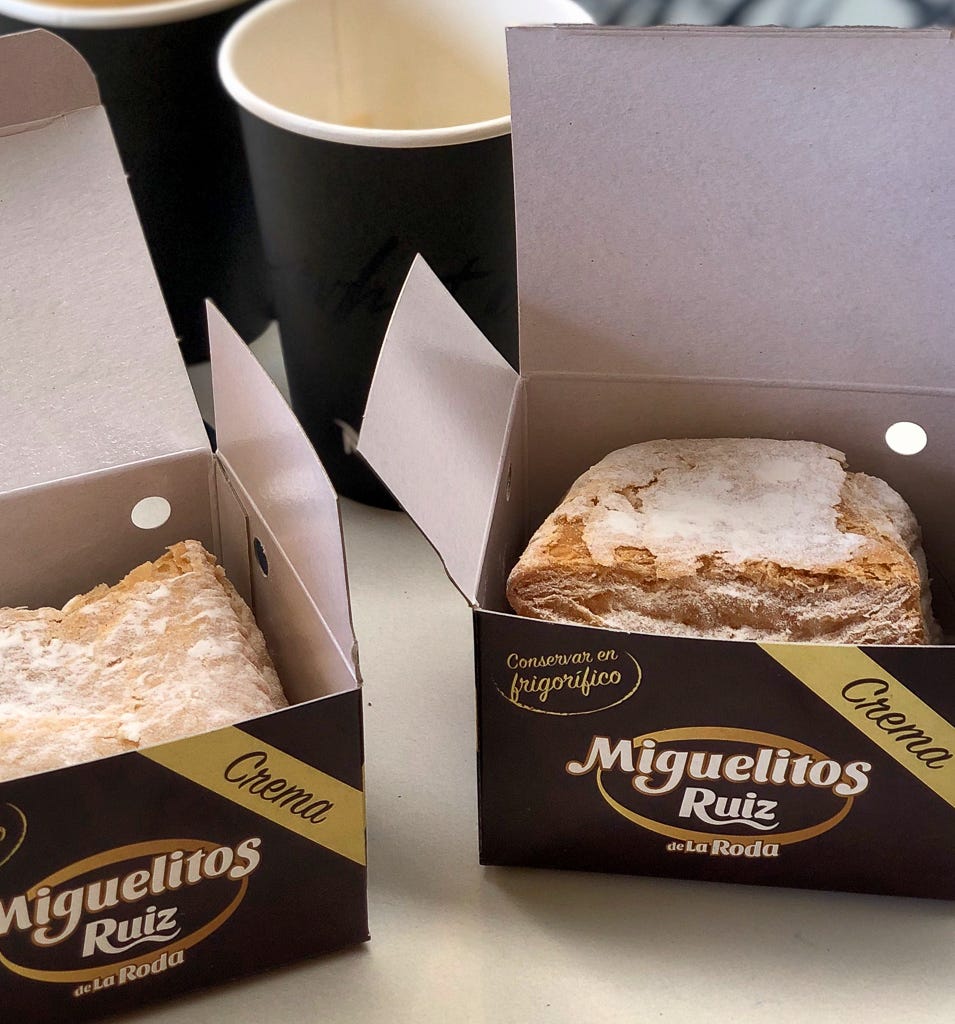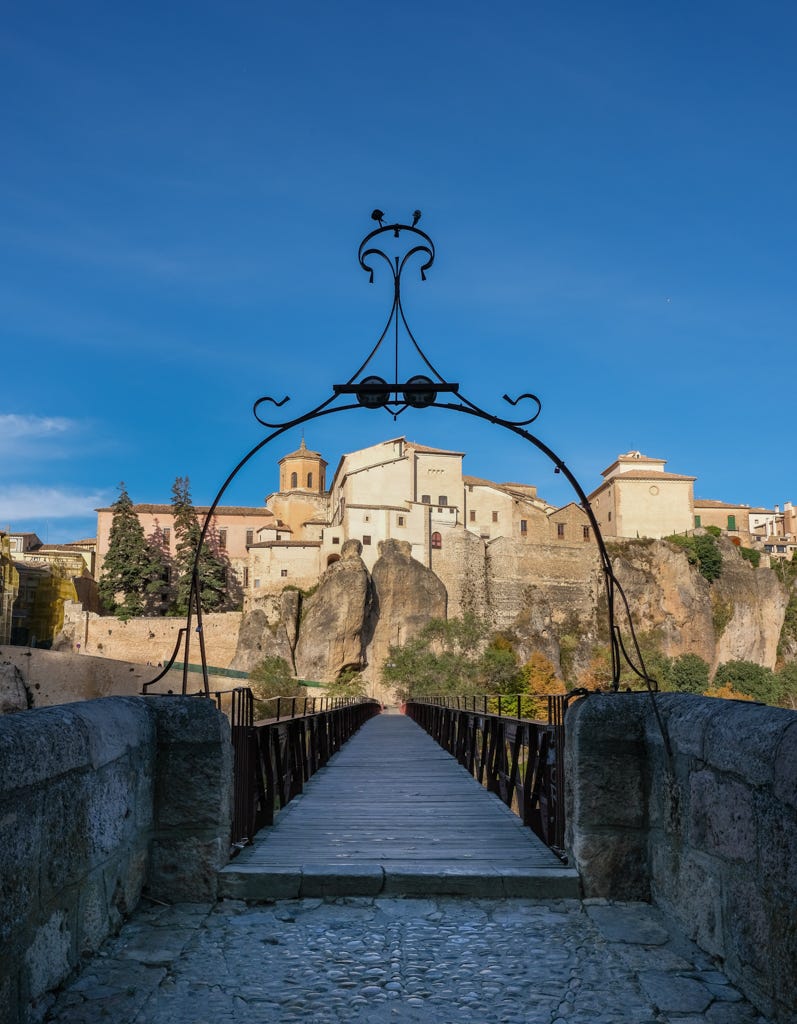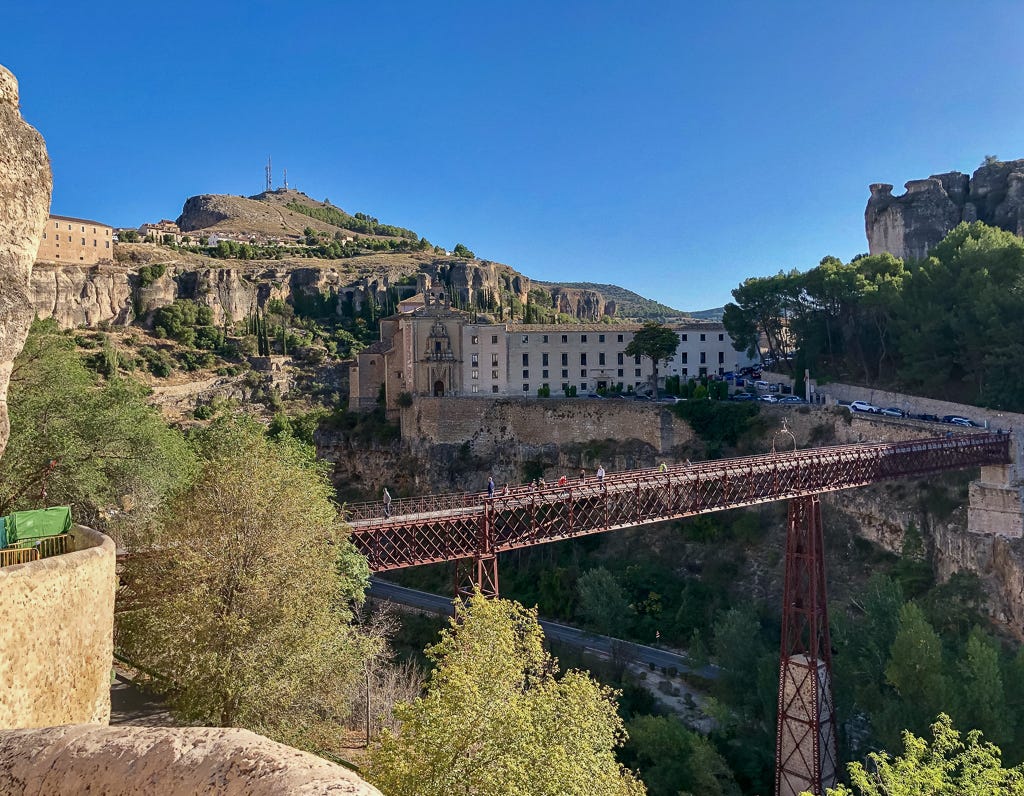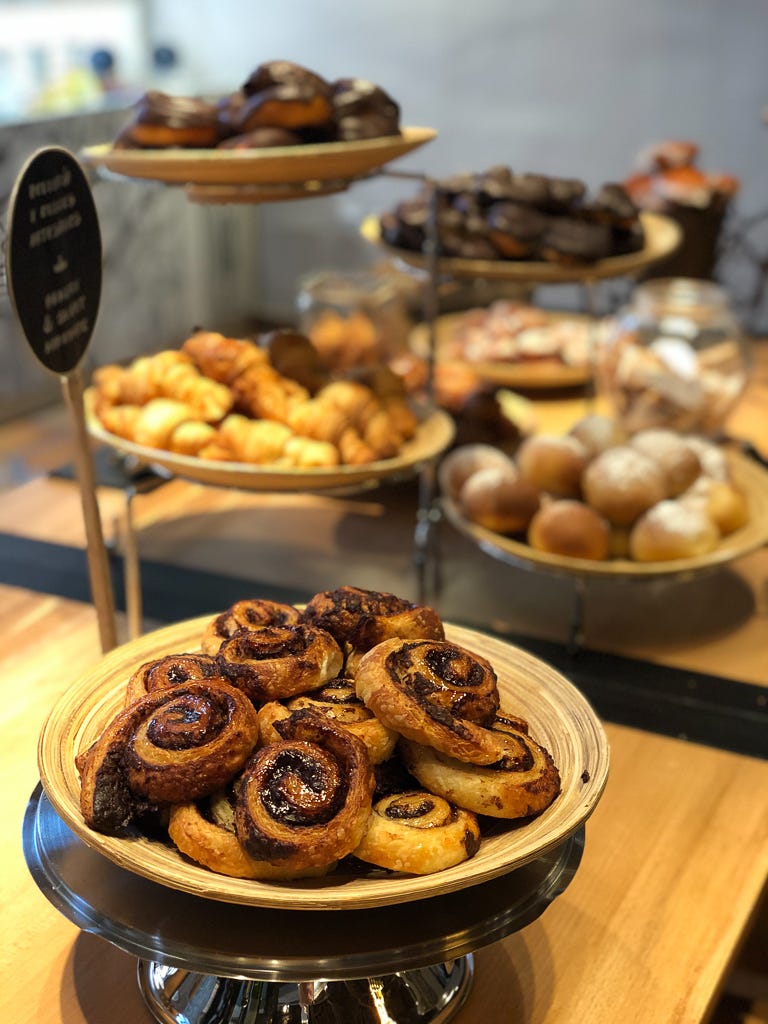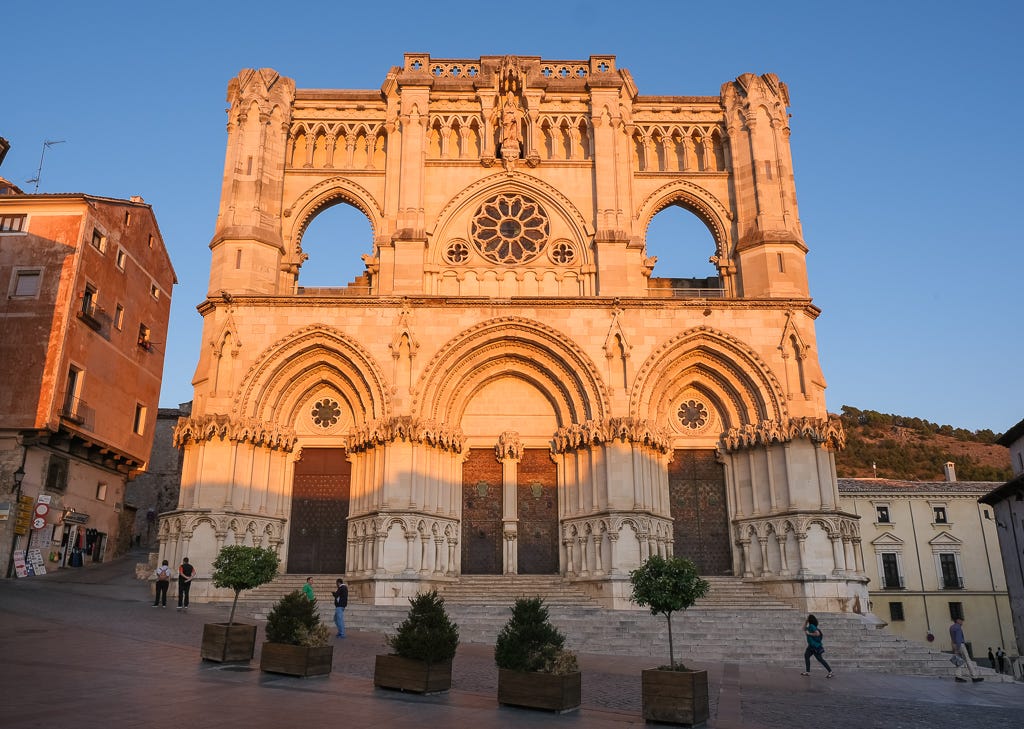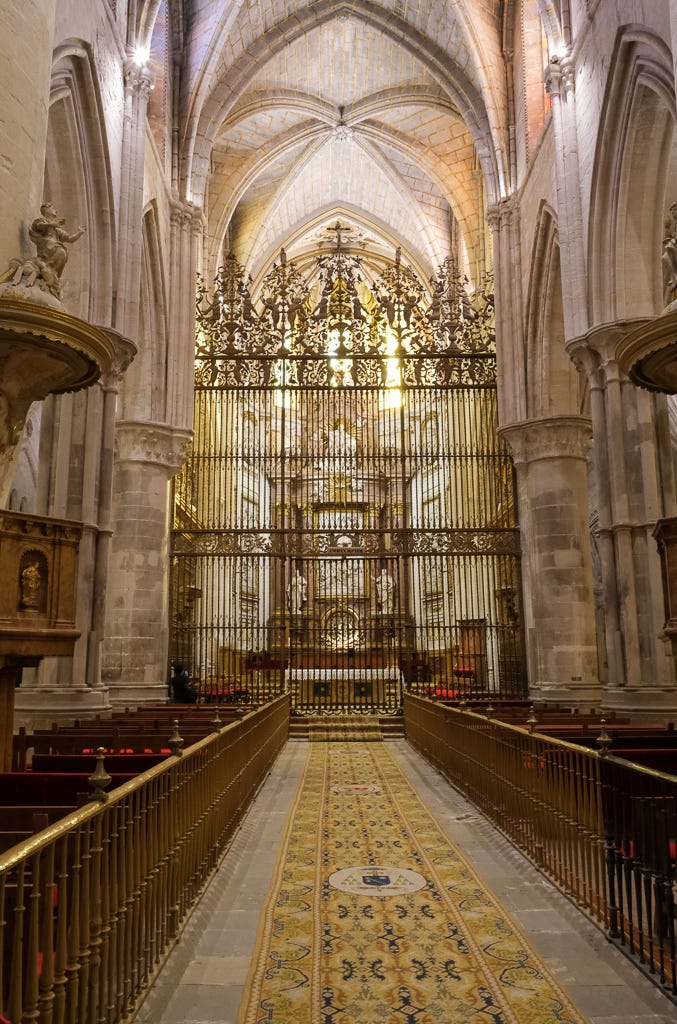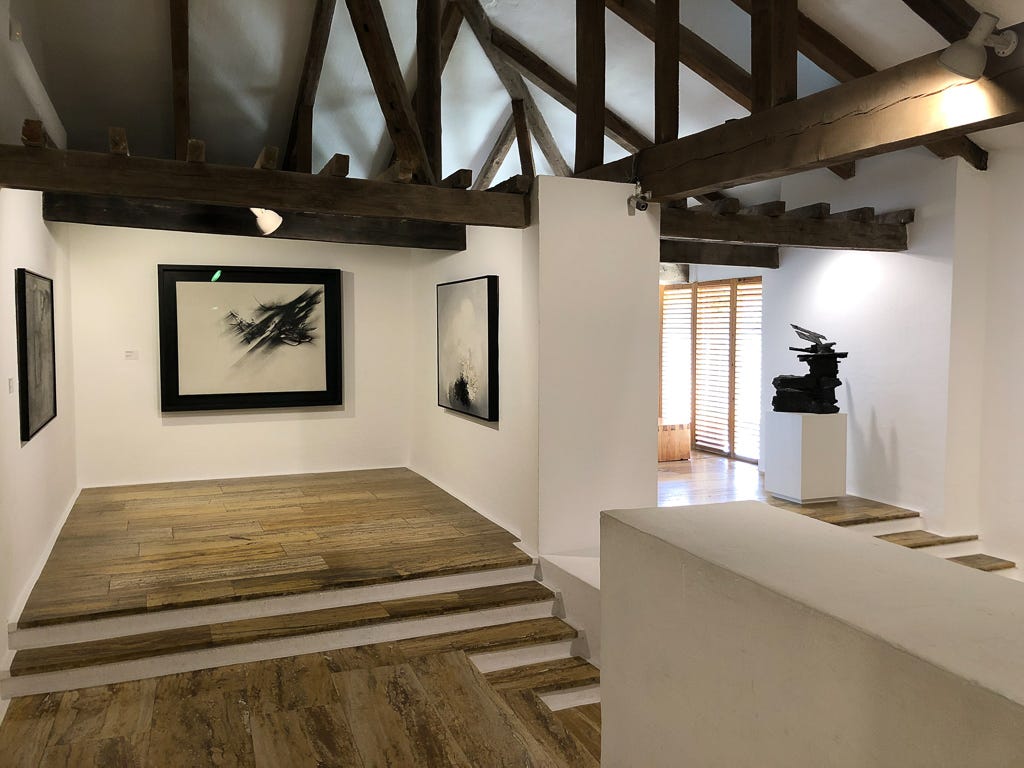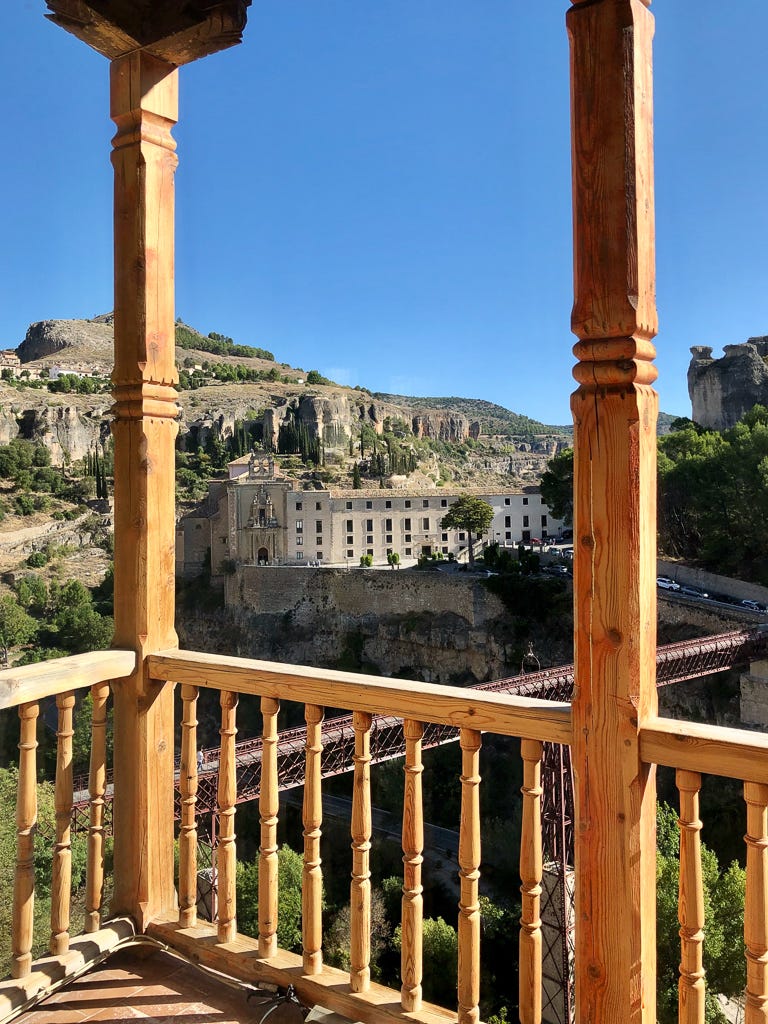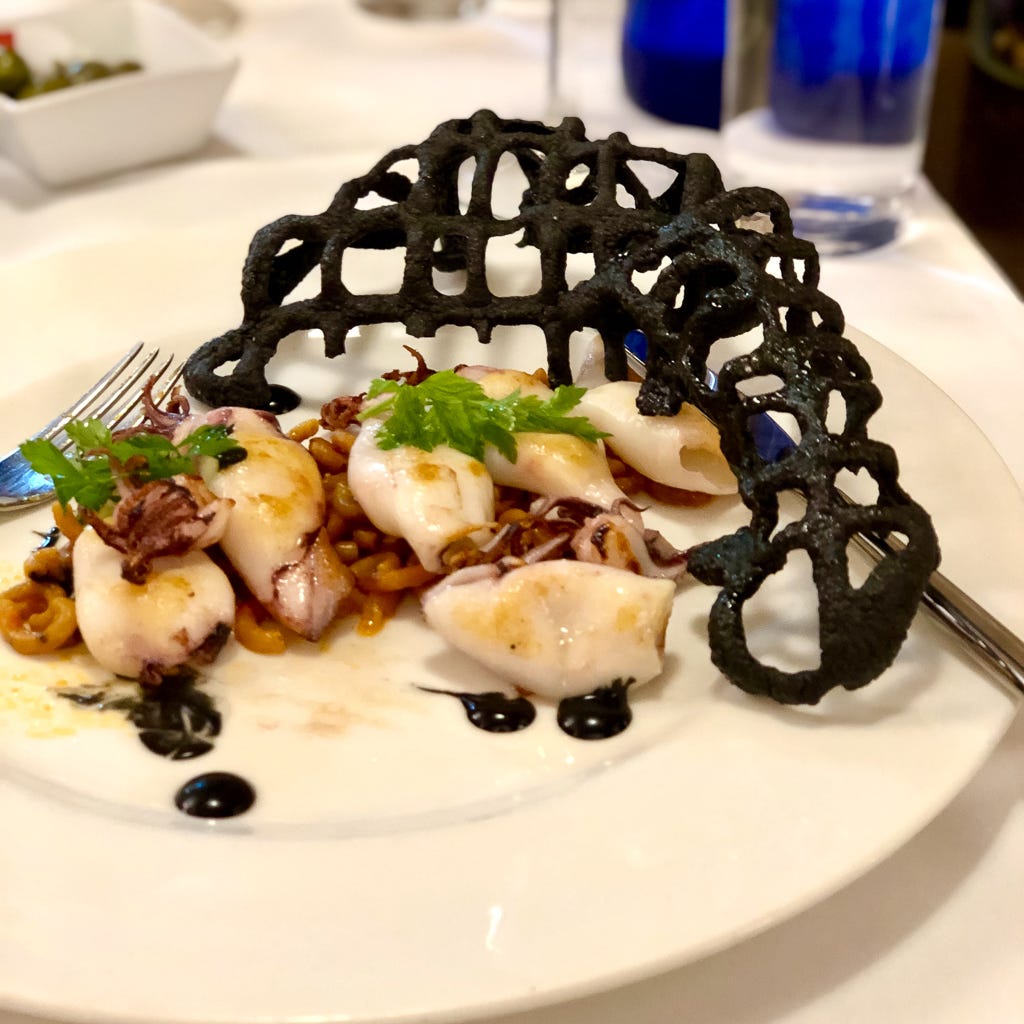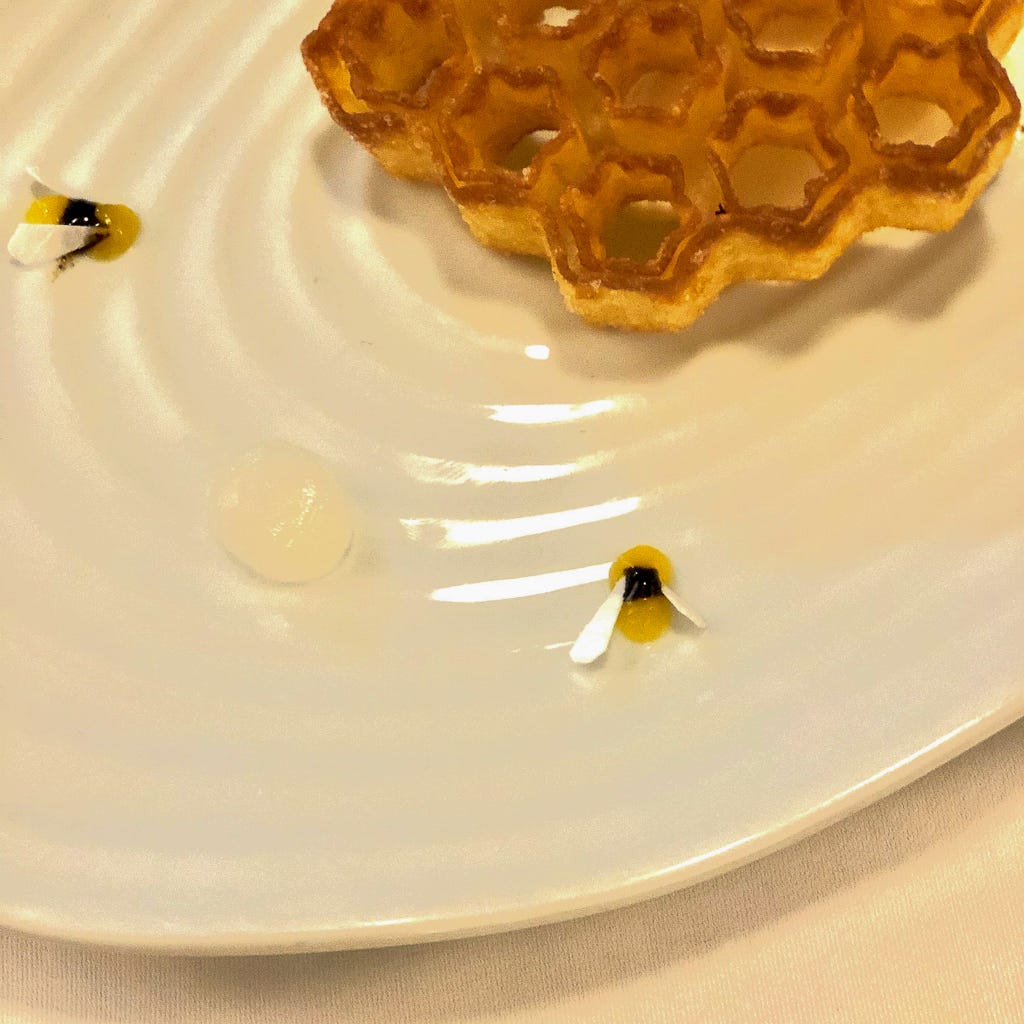The Yellow Brick Road to Cuenca
Road trips across the Spanish countryside often bring surprises. Like driving along for hours smack in the middle of acres upon acres of spent sunflowers withering in the fields, as harvesters scooped up the bounty for Spain's sizable nut and oil production. We were on our way to the UNESCO World Heritage city of Cuenca, but I felt more like Dorothy traveling the yellow brick road to Oz in the off-season.
And naturally, there were other diversions along the way. Like a roadside stop at Miguelitos Ruiz de La Roda, made famous for their very regional, very rich pastries.
Mere minutes from an exit along the highway A31, the factory is cream puff heaven. The stop is easily justified by a Spanish road rule for taking a break every two hours to stretch your legs. And being law-abiding guests of the country, stretch we did while grabbing a little espresso and the deservedly renown puff before continuing on our way.
While Cuenca would probably not be on everyone’s top ten list of places to visit in Spain, except for hard-core fans of Spanish abstract expressionism, it is a super easy day trip via high-speed train from Madrid or a short weekender for Costa Blanca residents. We fell into the latter category and after a 3-hour drive, set up base camp at the historic Parador de Cuenca on the eastern edge of town.
A grand, very old complex, the Parador is perfectly situated at the eastern entrance of the footbridge with unmatched views of the gorge, the bridge, and the famous “Hanging Houses” that grace most of Cuenca’s tourist brochures.
The original building was a 16th-century monastery that has been impressively renovated and brought up to 4-star standards. The restaurant and bar served above-average fare that would not have been on the menu for the monks.
Even the included breakfast was a pretty impressive spread of goodies, including champagne and fresh-squeezed juice, to get you energized for a low-key day of sightseeing.
Comparing this historic walled town to Oz turns out to be not all that far off. The city is perched high on a pinnacle sandwiched between two rivers, the Jucár and the Huécar, creating a protective gorge of dramatic rock precipices and making the historic center accessible only by a wooden and iron footbridge from the east and winding narrow roads from the west.
A 5-minute slightly uphill walk from the hotel brought us to the center square of the medieval historic part of town, flanked by the imposing facade of the Catedral de Santa María de Gracia and a few sparsely populated open-air cafes making it all the more evident it was off-season in Cuenca.
To our surprise, a self-guided audio tour of the Cathedral far exceeded our expectations. Albeit pretty lengthy, it was a Spanish history lesson in both church politics and artistic styles that spanned eight centuries. Beginning with the start of construction at the end of the 12th, continuing with ironwork from the mid-1500s and reconstructed windows from the 1990s.
After that lengthy, but totally worth it tour, we headed up a narrow passage to cool our heels with a glass of local wine and, as it turned out, with Federico Muelas, native of Cuenca and celebrated poet of the early 20th century, who we found sitting in an open-air courtyard tucked neatly off calle San Pedro.
This courtyard cafe of Restaurante El Aljibe was a welcome respite from tour buses charging up the hill to the ruins of the original fortress and arched entrance, and service trucks flying along the narrow cobbled road with sidewalks that felt to be about three inches wide.
While you can go down into the newer parts of Cuenca, the medieval center of town is by far the more interesting and very easy to explore on foot within a day or two. We continued our stroll with no destination alongside streets dotted with artisan ceramics shops, local foodstuffs, and a few too many tourist trinket distractions.
Every destination in Spain reveals its regional uniqueness. Every town lays claim to its attractions, be they architectural, environmental, artistic or culinary. Cuenca proved to be no exception. One of its best-known features is the famed “Hanging Houses” that heroically jut out from the sheer rock cliffs over the Huécar river gorge.
And since the mid-20th century, Cuenca has also become well known for its role as a first-class center of abstract expressionist art.
Coincidentally, these two top tourist attractions are roommates in the Museo de Arte Abstracto Español, benefitted from the Fundación Juan March.
The free museum houses an impressive collection in an accessible, almost intimate, environment. The Juan March Foundation first undertook a major restoration of the historic hanging houses to provide the perfect location for the collection. Despite the relatively tiny footprint, the galleries are flooded with natural light and minimally staged, with some of the best views looking back across the gorge to the bridge and the Parador.
And as with any city of Cuenca's size in Spain, it's a safe bet that good food and local wine is easy to source. The challenge is one of narrowing your choices from among some really good options.
A mere 10-minute walk from the Parador, we decided to dine at the Raff San Pedro, a Michelin-Plate restaurant housed in the former stables of an 18th century aristocratic stone mansion turned modern-day Leonor de Aquitania hotel.
Chef José Ignacio Herrái, a native of Cuenca, returned to his hometown following training in other parts of Spain, including a stage at famed El Bulli. He decided to start his endeavor and from start to finish, the meal was close to flawless.
As a disclaimer, I'm super sensitive to heavy-handed treatments and generally suspicious of culinary sleight-of-hand. Any dish must, first and foremost, elevate and celebrate the ingredient. If it takes a foam or freeze-dried crunch so be it, but flavor subtlety and balance is always a win for me.
As a first course, the Ñoquis caseros en salsa de manchego (homemade gnocchi with Manchego sauce) was an immediate yum. Gnocchis were light as a feather and the cheese sauce just creamy enough to cling to the pasta.
George opted for the Albóndigas de Corzo con puré de calabaza (roedeer meatballs with squash puree). The expected gamey taste was barely discernible, the richness of the meat bathed in an intense gravy puddled in a bed of fresh squash puree. The plantain chip garnish, which I might have otherwise suggested was overkill. was not. It had just the right amount of crunch and sweetness to add a bit of interest to the perfectly smooth puree.
I chose the chipirones plancha con fideuá (grilled baby squid with fideuá) as a second course. Chipirones are not easy to get right. Not fresh enough or a few seconds too long on the grill, they will turn into tiny morsels of rubber. As with every dish we tried, Chef Herrái demonstrated he knows his stuff. I was even charmed by the crunchy fishing net he created as a garnish for the little swimmers.
And as a finale to the meal, we followed the chef's suggestion for his signature dessert called "En un panal de rica miel" (honey in the comb). A crunchy little creation, intensely honeyed but light and flaky
So having hit all the highlights of Cuenca in a couple of days topped off with a wonderful meal and the setting sun, it was time to leave Oz and head back to Kansas (or in our case, Alicante). And maybe one more stop to stretch our legs on the way back...




